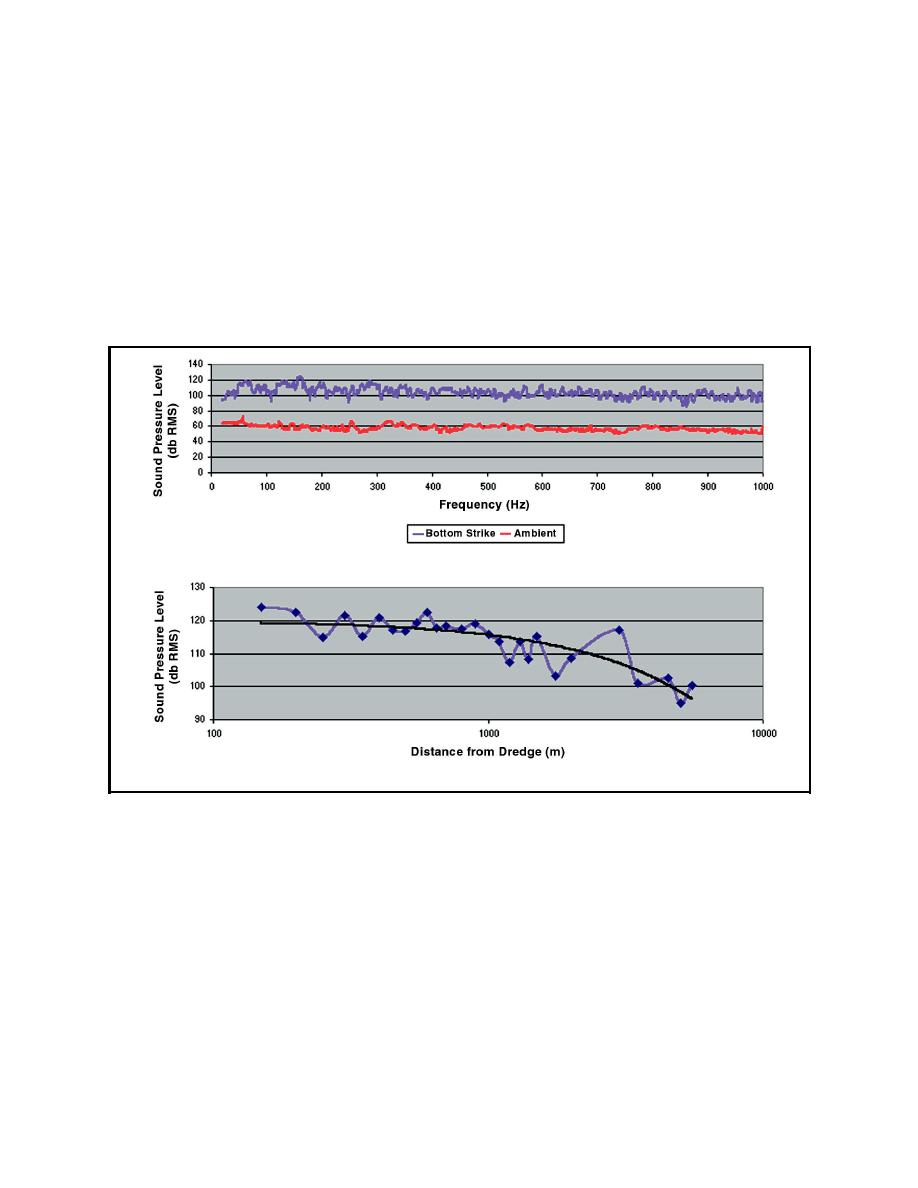 |
||
|
|
||
|
Page Title:
Figure 4. Sound pressure level produced by dredge bucket striking the channel bottom (coarse sediment and/or gravel) as measu... |
||
| |||||||||||||||
|
|
 ERDC TN-DOER-E14
August 2001
Bucket Striking Channel Bottom: Peak sound pressure levels (dB rms) produced by a dredge
bucket striking the channel bottom in mixed coarse sand and/or gravel are compared to ambient
conditions in Cook Inlet in Figure 4. Distance to the dredge plant source was 150 m with peak SPL
(dB rms) measured for the event. These parameters were used for the examples given for each
dredging event. Peak SPL was measured at 124.0 dB re 1 Pa-m occurring at a peak frequency of
162.8 Hz, or 50.8 dB re 1 Pa-m above peak ambient conditions (peak 73.2 dB re 1 Pa-m at <100 Hz;
average 57.5 dB re 1 Pa-m at <1 kHz). This event produced the most intense sounds of all events
in the dredging cycle (Figure 3). Peak SPL calculated at the 150-m listening station indicated an
approximate difference of +8 dB compared with a winch in/out event, and +25 dB compared with
a bucket closing event.
a. Ambient conditions
b. Attenuation with distance from the point source
Figure 4. Sound pressure level produced by dredge bucket striking the channel bottom (coarse sediment
and/or gravel) as measured over ambient conditions and its attenuation with distance from the
point source in Cook Inlet, Alaska
Peak SPL measurements were also recorded at varying distances from the dredge (Table 2). Fig-
ure 4 illustrates the attenuation of sound over distance for the bottom strike event. A reduction of
30 dB re 1 Pa-m occurred between the 150-m and 5,000-m listening stations (94.97 dB re 1 Pa-m;
peak frequency 72.7 Hz). Limited data indicated only faintly audible sounds for this event at the
7-km range, indicating the near outer limits of detectability in Cook Inlet for this type of dredge
plant.
Bucket Digging: This event is characterized by a grinding noise as the bucket jaws dig into the
sediment. Sound pressure levels (dB rms) for the "grab event" are compared to ambient conditions
10
|
|
Privacy Statement - Press Release - Copyright Information. - Contact Us - Support Integrated Publishing |